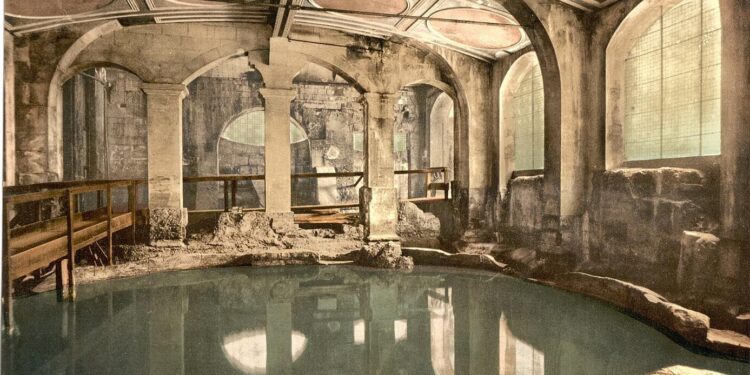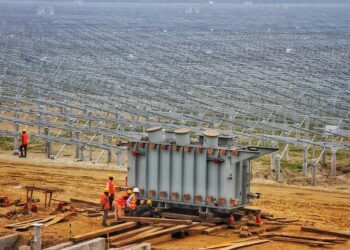Archaeologists have completed excavations of a massive Roman bath complex in Spain, unearthing a significant site that sheds new light on ancient Roman urban life. The extensive ruins, discovered in the southern region of the country, reveal advanced engineering and sophisticated architectural design indicative of the empire’s cultural and social priorities. This latest find offers fresh insights into daily routines, public hygiene, and community gathering spaces during Roman times, marking a milestone in Mediterranean archaeology.
Recent Discoveries Reveal Unprecedented Scale and Sophistication of Roman Baths in Spain
Archaeologists have uncovered an expansive Roman bath complex in southern Spain, showcasing a level of architectural mastery and urban planning unmatched in previous regional finds. Spanning over 5,000 square meters, the site features innovative water management systems, including hypocaust heating and an intricate aqueduct network that suggests an advanced understanding of engineering principles.
Key discoveries at the site include:
- Multiple bathing chambers: Caldarium, tepidarium, and frigidarium arranged for efficient heat regulation.
- Elaborate mosaic floors: Featuring mythological scenes and geometric patterns, remarkably well-preserved.
- Complex drainage systems: Designed to ensure hygiene and prevent flooding during heavy rains.
| Feature | Description | Estimated Date |
|---|---|---|
| Hypocaust System | Underfloor heating using hot air vents | 2nd Century AD |
| Mosaic Artwork | Intricate floor designs with vibrant colors | 3rd Century AD |
| Water Aqueduct | Channeling fresh water into baths | 1st Century AD |
Innovative Archaeological Techniques Uncover Intricate Details of Bath Complex Architecture
Archaeologists have employed a suite of cutting-edge technologies to delve deeper into the Roman bath complex’s architectural marvels than ever before. Utilizing 3D laser scanning combined with ground-penetrating radar (GPR), the team revealed previously hidden subterranean chambers and intricate heating systems that powered the baths. These non-invasive techniques enabled the mapping of structural layers without disturbing the delicate ruins, providing a comprehensive digital reconstruction of the site that offers fresh insights into Roman engineering prowess.
The investigation also incorporated drone photogrammetry to capture high-resolution aerial images, which, alongside advanced material composition analysis, helped identify diverse construction materials indicative of various renovation phases. Below is a summary of the key methodologies applied and their primary findings:
| Technique | Function | Key Discovery |
|---|---|---|
| 3D Laser Scanning | Surface mapping | Complex spatial layout |
| Ground-Penetrating Radar | Subsurface imaging | Hidden hypocaust chambers |
| Drone Photogrammetry | Aerial site documentation | Octagonal plunge pool identified |
| Material Analysis | Composition & dating | Multiple restoration phases |
Experts Advise Preservation Strategies to Protect Newly Excavated Ruins for Future Research
Following the monumental discovery of the Roman bath complex, specialists emphasize the urgent need for sustainable conservation methods to guard these fragile ruins against environmental degradation and human interference. Experts advocate for a multi-layered approach involving controlled excavation protocols, weather-resistant protective coverings, and the implementation of advanced digital documentation techniques. Such measures aim to ensure that the integrity of the site remains intact, providing valuable insights for both current scholars and future generations of researchers.
Key strategies include:
- Microclimate regulation: Installing sensors and climate controls to mitigate humidity and temperature fluctuations.
- Visitor management plans: Creating guided pathways and limiting access to sensitive zones to prevent wear and accidental damage.
- Regular structural assessments: Employing 3D scanning and drone monitoring for early detection of deterioration.
Additionally, collaboration between local authorities, international conservation bodies, and academic institutions is deemed essential for securing funding and sharing expertise. A summarized overview of recommended preservation measures is provided below:
| Preservation Technique | Primary Benefit | Implementation Timeline |
|---|---|---|
| Protective Shelters | UV and Rain Blockage | Short-term (6 months) |
| Digital Archiving | Permanent Record Keeping | Immediate |
| Environmental Sensors | Real-time Monitoring | Mid-term (1 year) |
| Restricted Access Zones | Preserving Fragile Areas | Ongoing |
The Way Forward
The completion of excavations at the massive Roman bath complex in Spain marks a significant milestone in uncovering the region’s ancient history. As archaeologists continue to analyze the findings, this discovery promises to deepen our understanding of Roman engineering, culture, and daily life on the Iberian Peninsula. Further research and preservation efforts will ensure that this remarkable site provides valuable insights for both scholars and the public for years to come. Stay tuned to Archaeology Magazine for ongoing coverage and expert analysis of this extraordinary archaeological achievement.
















